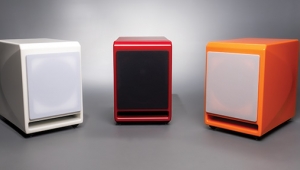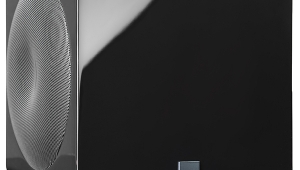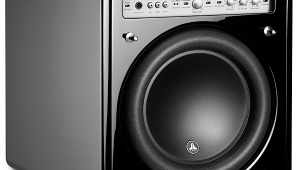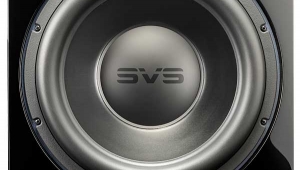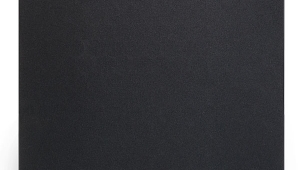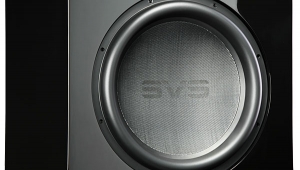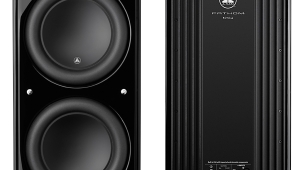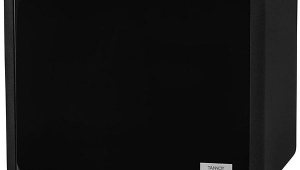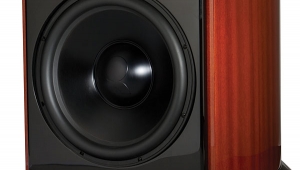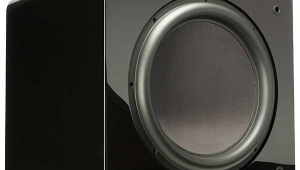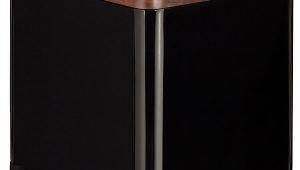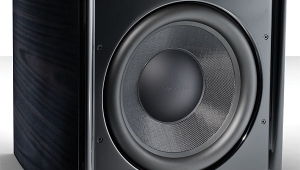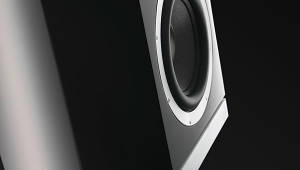| Columns Retired Columns & Blogs |
Muse Model 18 subwoofer Thomas J. Norton
Thomas J. Norton wrote about the Muse 18 in May 1993 (Vol.16 No.5):
Footnote 1: One doesn't exactly "snatch" the Muse—even if you're used to casually tossing around 155-lb boxes.
The subwoofer to beat, of course, would appear to be the Muse Model 18. My experience with this woofer had been limited to shows and the occasional visit to Robert Harley's listening room, where the Muses are a regular fixture. Since Bob was occupied reviewing two large, full-range loudspeakers and not currently using the Muse, I took the opportunity to snatch (footnote 1) his sample away for a listen in my own system. Muse was kind enough to send along several personality cards for the Model 18. I inserted the card for the Wilson WATTs/Puppies, set up the active Muse between the Wilsons, did some coarse setup adjustment by means of warble tones/sound-level meter, and sat down to listen.
It was obvious from the first that the single Muse was definitely a competitor for a pair of Entec l2-f20s. The response down to at least 20Hz was just as potent. At times I felt that the l2-f20s had been superior, at other times the Muse carried the flag off the field. There just wasn't that much to choose from between them in bottom-octave extension; to say that there was would be splitting hairs. Slightly higher up in the bass region—say, between about 30Hz and 60Hz—the Muse sounded more robust. Not by a great deal, but the difference was noticeable and, I feel, significant in this region where most of the "power bass" lies. The bass drum, in particular, generally sounded more potent over the Muse. So did the synthesizer—both "Psychopomp" from D&3228;fos and "Pseudopod" from The Abyss (Varèse Sarabande VSD-5235) were more powerful through the Muse. The l2-f20s seemed content to stay almost completely out of the way unless something genuinely deep came along, but both subwoofers integrated seamlessly with the Wilsons (my initial setup with the Muse proved entirely satisfactory). Neither called undue attention to itself at any time.
The high-pass filter on the l2-f20s appeared to be a bit more transparent than that on the Muse, the WATTs/Puppies/l2-f20s having the slightly more open, transparent soundstage. But not by much. Part of the advantage may have been the simple fact of stereo subwoofers with the l2-f20s, though I noted no dramatic advantages to that configuration in my room.
The Muse did not escape the overload problems I noted with the l2-f20s. With the same torture-test material—the Däfos drumset, the Rhinefalls, synthesizer effects from the Telarc Kunzel-fests—the Muse also showed a tendency to rattle merrily away, at times in a more alarming fashion than the l2-f20s had. Again, however, this distortion was well masked by the output from the main loudspeakers and only audible when listening to the Muse by itself. And, as was the case with the l2-f20s, the video-sound material stressed the Muse less than the most challenging CDs. Remember, though, that here I am comparing the overload of one Muse with that of two l2-f20s. For this reason, I didn't try to compare a single l2-f20 with a single Muse—the most appropriate comparison, pricewise. Removing one of the l2-f20s would have required an increase in level of 6dB in the remaining one to keep the net low-frequency output the same—an unreasonable demand, based on my overload observations. (A single l2-f20, however, might work quite well in a small listening room.) It would be interesting to compare two Muses with two l2-f20s, but a bookend-set of Model 18s were not available. Nor would they have fit particularly well in my listening room.
I did conduct some interesting and revealing measurements before finishing with the Muse. Using warble tones, I measured an SPL at the listening position of 100dB at 40Hz from the single Muse before it began its complaining rattle. (footnote 2) The corresponding figures for other frequencies were: 94dB at 31.5Hz, 97dB at 25Hz, and 97dB at 20Hz. (The reason for the dip at 31.5Hz is likely a room effect, though it's possible that something in the Muse was resonating at that frequency.) I ran the same measurements for the pair of l2-f20s; the results were 91.5dB at 40Hz, 89.5dB at 31.5Hz, 93dB at 25Hz, and 91.5dB at 20Hz. Clearly, even allowing for somewhat different room interaction, the Muse is capable of the greater output—even one against two (footnote 3).—Thomas J. Norton
Footnote 1: One doesn't exactly "snatch" the Muse—even if you're used to casually tossing around 155-lb boxes.
Footnote 2: Remember that this is at Santa Fe's 7000' altitude. My measurements of a loudspeaker's sensitivity in Santa Fe and at sea level—see Vol.13 No.5, May 1990, pp.5–9—indicate that around 4dB should be added to TJN's measured SPLs to get the equivalent maximum operating level of these subwoofers at sea level.—John Atkinson
Footnote 3: These measurements were taken at the listening position, about 3m from the subwoofers—making this a more severe test than those conducted in the near field or at 1m. It was carried out simply to informally compare the output capabilities of the Entecs and the Muse. 100dB at the listening position, even below 40Hz, is loud.
- Log in or register to post comments
